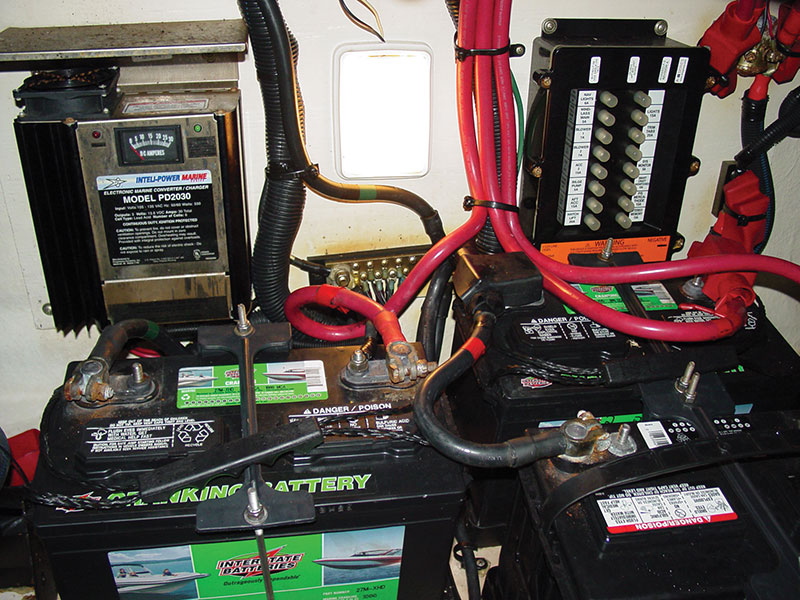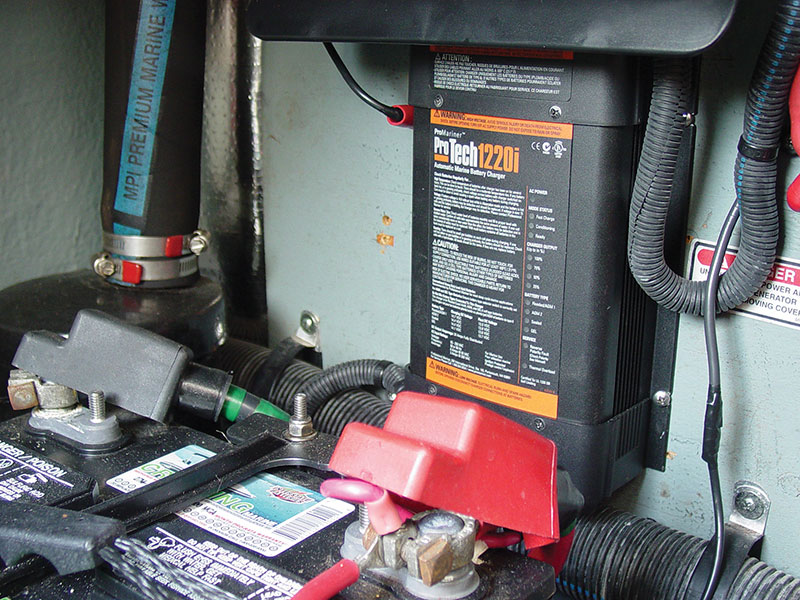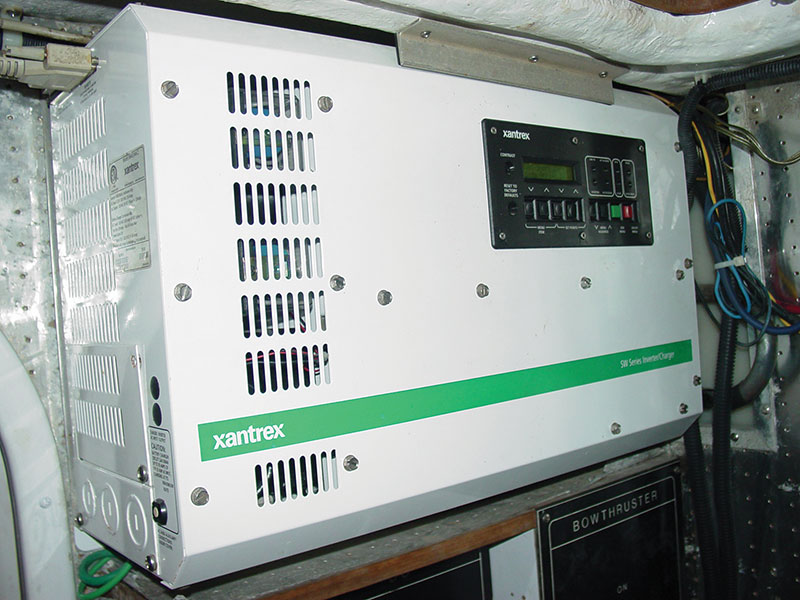
How to install a battery charger onboard.
Photos and story by Capt. Frank Lanier
Marine batteries are expensive and proper maintenance is crucial, both for performance and increased service life. A great way to monitor and promote good battery health is by installing a modern “smart” battery charger. Here’s a look at some installation basics.
Choosing a location
Deciding where to mount your charger can be an exercise in compromise, so be sure to follow all manufacturer instructions. Generally, the best option is a cool, dry area with adequate ventilation. Higher up is also better, as it provides more ventilation and protection from the corrosive humidity of the bilge. You’ll want to avoid high-temperature locations (such as your engine compartment), although this can be difficult on smaller boats with limited options.
Many of the storage areas that battery chargers wind up in have marginal ventilation at best. If that’s the case with your installation, help your charger breathe easier; avoid cocooning it with life jackets, boat covers and other air-blocking items. Adding locker vents to increase air flow may also be a good option.
Chargers should be as close to the battery or battery bank as practical. A shorter lead means less installation cost, less voltage drop (which we’ll discuss in a moment) and increased charger performance over the life of the unit. That being said, they should not be mounted directly over the batteries. Batteries (particularly wet cell types) produce corrosive gases while charging, which can quickly damage a charger located above them.
As uncontrolled combustion is not our friend, battery chargers installed on a gasoline-powered vessel must also be labeled as being ignition protected.
For PWCs and other open-type craft, you’ll want to go with a sealed, waterproof charger.
Regardless of what you choose, stay away from automotive chargers. They’re not designed for marine use and can cause a multitude of problems, from stray current corrosion to shock hazards.
Mounting the charger
Once you’ve picked a suitable spot, next up is mounting the charger. For smaller chargers being mounted to a thick bulkhead or structure, screws are an acceptable option. If the charger weighs more than a couple of pounds, however, it should be through-bolted. Regardless, make sure you use marine-grade stainless steel for all mounting hardware.
Getting wired
Next up is wiring the charger, which involves installation of both AC (to power the charger) and DC wiring (which connects the charger to the battery).
DC wiring should be sized according to the manufacturer’s recommendations, which is based on the distance between the charger and battery. This measurement is “round trip” length (i.e. the full length of the negative and positive wires added together).
The longer the wire run, the larger diameter wire you’ll need to offset loss due to voltage drop (a loss of power resulting from the use of wire that’s too small for the run). Using smaller diameter wire than recommended can both decrease charge voltage seen at the battery and increase charging time.
Wires should be routed as directly as possible and provided with support (every 18 inches minimum) and chafe protection as needed. Once the wire runs are in place, connect them to the battery charger per the owner’s manual. Wire-to-wire connections should be made using marine-grade butt splices, preferably those with heat-shrink tubing.
Never use twist-on wire nuts or electrical tape joints, both of which will eventually fall off, leaving exposed, energized connections.
If the charger DC wire terminates in spring clamps or alligator clips (to make the battery connections) cut them off and replace with proper marine-grade ring terminals.
For smaller boats or watercraft without a permanently installed AC system, hooking up the AC side can be as simple as plugging the battery charger into a suitable extension cord. For a more permanent install where the charger is the only AC-powered item onboard, another option is installation of a grounded AC power inlet, which accepts a standard extension cord plug.
If your boat already has an AC system installed, plugging the charger into a convenient outlet (if one is nearby) may be an option. If not, you’ll want to power it from the main AC distribution panel using marine-grade, multi-stranded, three-conductor AC wiring (no residential-type solid strand wire, please).
Pick an unused circuit breaker of the amperage called for by the charger manufacturer (typically 15-20 amps) and connect per the instructions.







